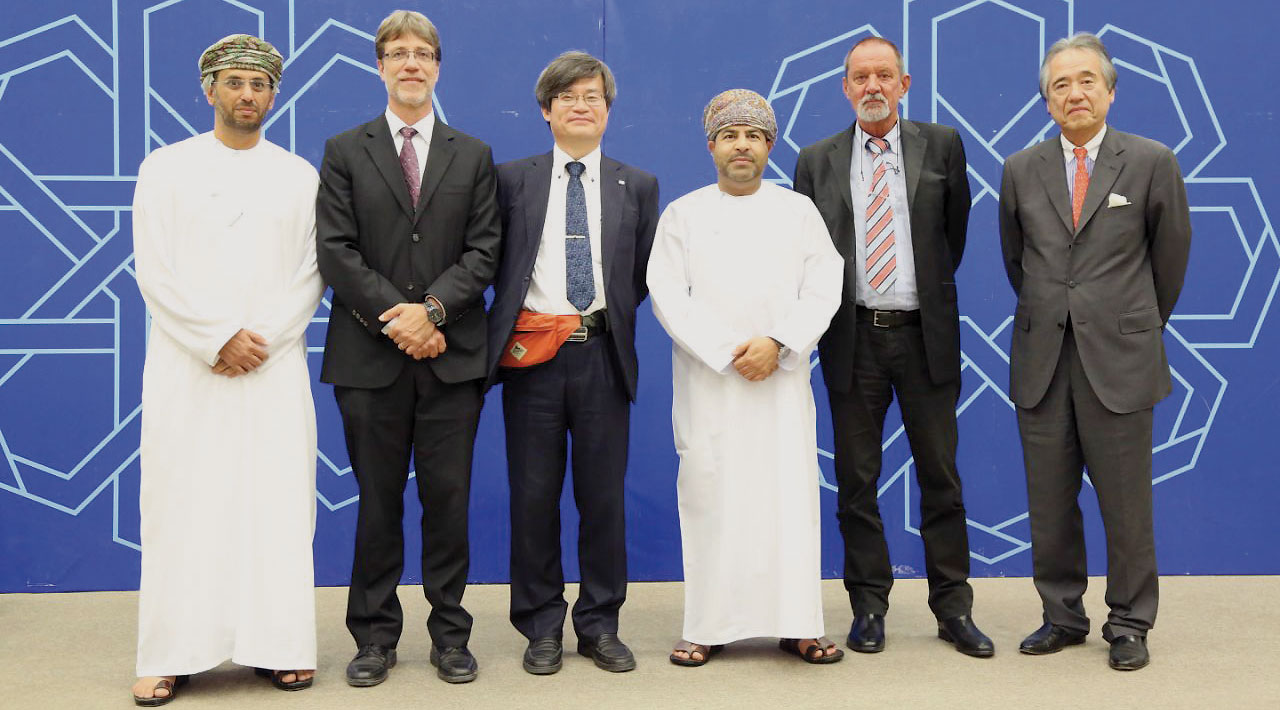

MUSCAT: Prof Dr Hiroshi Amano, the Nobel Prize Laureate in Physics for 2014, delivered on Monday a Nobel Lecture titled “Brighter World and Sustainable Life with Blue LED and Transformative Electronics” at the German University of Technology in Oman (GUtech).
Under the auspices of Dr Said bin Hamed al Rubiei, Secretary-General of the Education Council, the rectorate members of GUtech and academicians, students, as well as researchers from GUtech and other colleges and institutions attended the Nobel Lecture.
Prof Dr Amano started the lecture by fondly telling the audience a funny story about how he learned about being chose for the prestigious award. “I was astonished to see Japanese journalists at the French airport in Lyon approaching me for interviews on the Nobel Foundation announcement,” Prof Amano described. Amano was abroad at the time of the announcement on October 7, 2014. He thought: “Maybe Prof Akasaki has won the Nobel Prize in Physics and they want a statement from me.” He was the awardee, together with Isamu Akasaki and Shuji Nakamura were awarded the Nobel Prize in Physics “for the invention of efficient blue light-emitting diodes which has enabled bright and energy-saving white light sources”.
Amano commented that red and green diodes had been around for a long time, but white lamps could not be created.
Hiroshi pointed out in his lecture that the red LEDs were based on Gallium Arsenide and the green ones on Gallium Phosphide, and it was a known among researchers that blue LEDs were likely to be based on Gallium Nitride.
“Scientists tried to discover the blue LED, but they abandoned the idea as they could not harvest the right crystals from Gallium Nitride,” Prof Dr Hiroshi worked closely with Prof Dr Akasaki. “The Blue LED had remained a challenge for three decades,” Prof Amano added.
Amano shared with the audience his take on the properties of Gallium Nitride which has enabled the LED revolution in lighting.
“Gallium Nitride-based High Electron Mobility Transistors are becoming the devices of choice for high-efficiency radiofrequency power amplifiers, which are essential for the next generation of wireless network infrastructure, 5G,” Amano elaborated.
There’s more to come, said Amano. “Because ultraviolet light kills the DNA of bacterium and microorganisms, deep-UV LEDs are now considered for water purification,” Amano said.
On saving electricity consumption, Amano explained that “replacing the currently used Si-based power devices with GaN transistors to save nearly 10 per cent of total electricity consumption”. Amano added that the developments made based on the invention have expanded the capabilities of Gallium Nitride to power electronic applications up to 1,200 V and beyond, reducing energy losses in photovoltaic conversion systems, providing smaller and lighter power supplies.
Oman Observer is now on the WhatsApp channel. Click here



